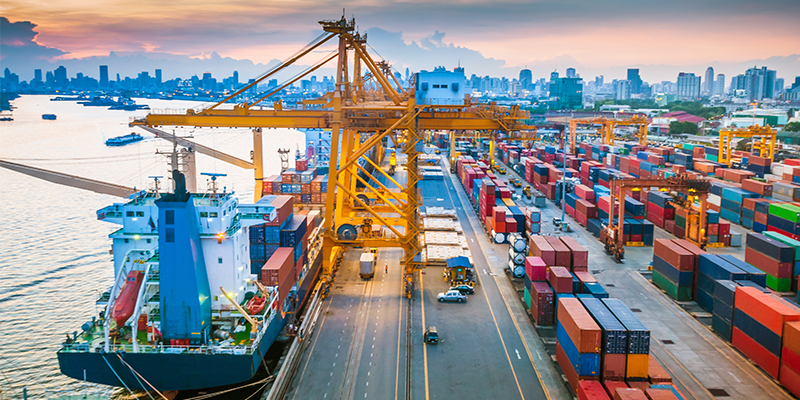Ports and occupiers are facing innumerable challenges brought on by increased demand, supply chain delays and shortages of drivers who move materials after they’ve been unloaded from container ships.
Nicole Bennett, executive managing director, logistics & industrial co-lead, Americas, Cushman & Wakefield, moderated a session at I.CON West: The Industrial Conference this week and posed a series of questions to two experts on what it will take to get back on track. (Answers have been edited for length and clarity.)
Ports have been the focus of much of the conversation around the supply chain. What’s the current state and is the backlog dissipating?
Mario Cordero, executive director, Port of Long Beach: It’s fair to say there’s been progress from where we were last September. Certainly, we’ve diminished capacity restraints at the ports of Long Beach and Los Angeles. Last fall, a considerable number of containers had been at the port for nine days or more, and that’s been diminished by 60%.
A second issue we’ve addressed is the number of empty containers that were sitting at the port waiting to return to Asia. For context, at one point, 50% of the containers at the port were empty, and that’s now around 35%. The biggest issue now is the serious lack of rail cars, and it’s not the first time we’ve been in this situation. The ports in Southern California are the nation’s largest gateways; together, the ports moved more than 20 million TEUs in 2020. In my view, railroads should consider having a rail storage facility in Southern California, or even nearby in Arizona or Nevada, so when there are backups in Chicago or Kansas, there is a supply here.
This global disruption brought on by COVID-19 raises the opportunity for us to focus on operational and transformational changes to the supply chain. Our focus is cargo velocity and cargo throughput. We’re looking at a projection of 28 million containers by 2030, and something has to change. That could be the addition of a third shift, as well as other operational changes.
We’ve heard about the temporary 24/7 operation at the ports to help clear the backlog. Is making this permanent feasible or could it create additional problems?
Cordero: It’s a work in progress, not just a short-term solution. Ports in Asia are 24/7, railroads operate 24/7, and we must look at how the supply chain works to see how we can expand our hours of operation. A study by Cushman & Wakefield said that Southern California ports need to do two things: track consumer demand and move forward with a new operational way. Explosive growth in consumer demand has contributed to this situation, and we need to work toward a 24/7 supply chain, including warehouse operations, because the cargo has to move.
The ports have cleared some of the congestion, but it doesn’t end there. What are some of the challenges that shippers and suppliers are facing?
Brian Fish, senior project manager, St. Onge Company: There’s more to the supply chain than a ship coming into the port. Once the containers are off-loaded, now what? Next a drayage provider comes in with a truck and chassis – but a chassis is increasingly hard to find and is needed to get the driver into the port. This creates a new issue. For companies that are located here in Southern California, we suggest they lease a chassis pool to help their trucks get into the port. This impacts 24/7 operations. If suppliers can’t get into the ports to get containers out 24/7, it’s almost pointless for the port to be open around the clock. A lot of things have to click for 24/7 to work. They call it a bottleneck for a reason.
Vacancy is challenging everywhere, so where do we go next and what are the next markets to expand?
Fish: The variable here is the consumer and how fast they expect their delivery. If a supplier wants to be within two days of service to 95% of U.S. population, there are three markets that get them there: Salt Lake City; Jackson, Mississippi; and Louisville, Kentucky. If they want to be within one day, they need to be in eight locations: Seattle; Fresno, California; Albuquerque, New Mexico; Waco, Texas; Bloomington, Illinois; Huntington, West Virginia; Newark, New Jersey; and Jacksonville, Florida.
The impact of expanding into these markets is significant: more multiclient warehousing, more aggregate inventory, more inbound containers, more port congestion, more drivers. The definition of “now” is changing, and that’s why Amazon has locations everywhere.
This post is brought to you by JLL, the social media and conference blog sponsor of NAIOP’s I.CON West 2022. Learn more about JLL at www.us.jll.com or www.jll.ca.









